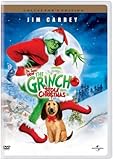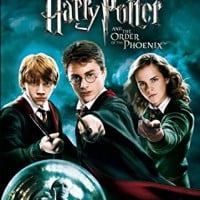Top 10 Least Faithful Book to Film Adaptations
Adapting a hit novel into a motion picture is very dicey business. You don't have the same amount of freedom in the studios as you do in front of a computer, type writer or pen and paper. You have to take your budget and runtime into consideration and you also have to exclude certain points in the novels that might not be appropriate for the target audience. Now I'm not saying that these movies are necessarily bad. Some of them are good. But the whole point of this list is to compare what the community thinks are the least faithful movie adaptations of bestselling books. Feel free to add your own entry or comment.
While the film has become something of a cult classic of later years, it didn't do very well upon its original release. Mind you that the book was released in 1977 and the film came out in 1980, back in a time when books was still a primary form of entertainment so it's easy to see the vast majority of the audience will have read the book first. In the film, Jack Nicholson's Jack Torrence starts out as the irritable patriarch of his family and simply descends into madness from being isolated. In the novel, he starts out as a caring father until his alcoholism takes its toll. Book Wendy was also more strong-willed and protective of Danny whereas the film's version played by Shelly Duvall is a complete doormat and Stephen King was not amused with how Stanley Kubrick changed her character. There was also no hedge maze in the book either. Oh, and the whole iconic "Heere's Johnny! " scene? That didn't happen in the novel.

When Willy Wonka & The Chocolate Factory was released in 1971, it barely made a profit but has since become a cult classic by many people. In the original novel by Roald Dahl, it was meant to be more of a cautionary tale and the character of Willy Wonka was quite different from the one Gene Wilder portrayed on screen. The film was also a whimsical musical filled with many catchy songs like "The Candy Man", "Pure Imagination" and "I Want It Now! " Dahl was very unhappy with the adaptation of the film and refused to allow anymore of his works to be translated onto the big screen. Will we ever see an adaptation of "Charlie and the Great Glass Elevator? " It doesn't look likely.

While some book to film adaptations have to cut out a good chunk of content to allow a decent run time, Peter Jackson did the polar opposite with J.R.R. Tolkien's The Hobbit and stretched it over three films. The Hobbit trilogy changed many things from the book like the battle between the five armies but probably the biggest change that really agitated viewers who also read the book was the inclusion of Legolas from The Lord of the Rings trilogy. I'm guessing Orlando Bloom needed the paycheque. One one hand, I'm not going to pay $10/ticket to see Peter Jackson regurgitate Tolkien's classic word for word. But on the other hand, this kind of filler was just overkill to some.

What people might not know about this Disney classic is that it's loosely based on The Frog Princess by E.D. Baker. However, the settings and characters are very different. In the book, it takes place presumably during medieval times in a mysterious land known as Greater Greensward. But the movie takes place in New Orleans in 1926. The heroine in the book is the princess of the land and is forced into an arranged marriage. But Disney did things differently by having the leading lady being Tiana, an African-American waitress who dreams of being the owner of her own restaurant. As you can tell, the similarities between the book and film are few and far between. But it's still an enjoyable film nevertheless.

When Jurassic Park was released in 1993, it took the world by storm with its realistic dinosaur animatronics and CGI effects. It's still considered a classic even to this day. So when Michael Crichton released The Lost World, a sequel to his hit novel Jurassic Park, it was only natural that Steven Spielberg would adapt it into a film two years later. However, the film is very different from the novel.
In the novel, Ian Malcolm was bitten in the leg by a T-Rex and hasn't fully recovered yet, and Lewis Dodgson from Jurassic Park returns with two lackeys to go to Isla Sorna to steal some unhatched dinosaur eggs to save his company Biosyn. In the film, he's replaced by John Hammond's corporate slimeball nephew, Peter Ludlow, who takes control of Ingen from his uncle and leads a bunch of Marlboro men to Isla Sorna to capture the dinosaurs and bring them back to the mainland. Also, in the book, all of the dinosaurs stay on Isla Sorna, so the whole T-Rex in San Diego climax at the end of the film was totally original.
The films are a far cry from the novels, but when you consider how violent Crichton's books can get, it's probably for the best.

For many years, Theodor 'Dr. Seuss' Geisel's book and animated special "How The Grinch Stole Christmas" has been read and watched by many during the Christmas season about how the titular Grinch tries to prevent Christmas from coming to Whoville by stealing all the material elements. But he soon finds out there's more to this festive holiday than 'ribbons, tags, packages, boxes and bags'. When you consider that the book was only 69 pages long and designed for young children, it's easy to see why the Grinch's back story was necessary. But probably the biggest and most noteworthy change is how Cindy Lou Who went from a simple mention to a key character. And this is just my personal opinion, but I think Jim Carrey and Taylor Momsen had a special chemistry that just somehow worked. It's just a shame "The Cat in the Hat" starring Mike Meyers was so terrible, it caused Audrey Geisel to snap and disallow anymore of her late husband's work to be adapted to real-life movies.

Many would argue The Love Guru is what ended Mike Meyer's acting career, but his performance in this train wreck was even worse. Following on the premise of an anthropomorphic cat coming to entertain two children of a single mother, the movie adds quite a bit of side-stories that just feel shoe-horned in. The biggest example is the mother's boyfriend who acts like a successful businessman but is really an unemployed slob. With all the extra stuff they needed to add to make this a full-length feature film and the hidden adult jokes, it's easy to see why Theodore's widowed wife Audrey laid down the hammer on anymore live-action adaptations of her late husband's work.

A charming tale about how it's not how you start but how you finish, Forrest Gump remains a charming tale about how a dim-witted child from Alabama become very successful in life. From being a star football player to a war hero and running a successful shrimp business, it really is a tale for the ages. But the movie made some changes from Winston Groom's 1986 classic. In the movie, Tom Hanks portrayal of Gump was morally squeaky clean and lovable who never uttered a swear word. But in the novel, he swore a lot, chain smoked marijuana and even spent time in jail and a mental hospital. Plus, they had to edit out some of his more outlandish exploits such as a professional wrestler and an astronaut. The ending was also less happy in the novel.

Essentially took the title of a successful book, and wrote an entirely different story.


What a lot of people don't know is that Jumanji is actually based on a picture book of the same name which was written and illustrated by Chris Van Allsburg and published in 1981 by Houghton Mifflin. While it does follow the same premise of a magical board game, it has many elements added into it, such as the game being buried a century before Alan Parrish discovered it in a construction site in 1969. Speaking of which, him and Sarah Whittle do not appear in the book and Peter and Judy's parents are very much alive while in the movie, they died in a car crash on their way to Canada for a ski trip. Also, *SPOILER ALERT! * when Alan wins the game at the end, the board game turns back the clock to 1969 and history is changed. Naturally, the movie wouldn't have been successful if it stuck to the source material.

There has never been a book series quite like J.K. Rowling's Harry Potter series and after books started selling out. Warner Bros. took the initiative and started adapting them into full-length films the likes of the United Kingdom and the rest of the world haven't seen since James Bond. And while content from the books had to be changed when going to the big screen, Order of the Phoenix has to have seen the most changes. And when you consider that it's the longest book in the series at 870 pages in the United States, it's easy to see why. One of the most notable omissions was Ron trying out for Quiddich, much to Rupert Grint's chagrin. In fact, the only scene in the movie involving flying brooms is when Fred and George barge in on the O.W.L.S. exam and blast all the decrees Delores Umbridge has imposed before opening a joke shop in Diagon Alley. Of course, Rowling knew that the cut content couldn't be helped.


Whoever directed this clearly didn't read the actual book, and ruined the plotline of the entire series, making it about the Demigods overthrowing the Olympians. Every character is about five years older than they should be (12), Grover is black, and this has literally nothing to do with Kronos trying to overthrow the Olympians.
What a tragedy. The book was phenomenal and the movie just tore the entire plot to shreds. But...they're coming out with a Disney+ series directed by Rick Riordan himself, so maybe we'll actually get to see a great film adaption!







